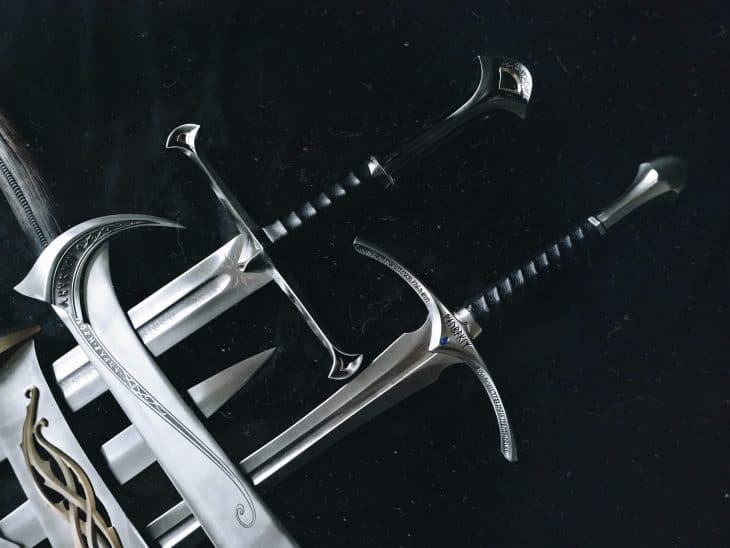
The average sword collector or fantasy game enthusiast is likely to know all about the different types of swords. However, it can still get a bit tricky. Why? Because these types often overlap with one another, especially with their long and heavy (literally!) history. Fear not because we’ve compiled these different types of swords into a list!
Short Sword
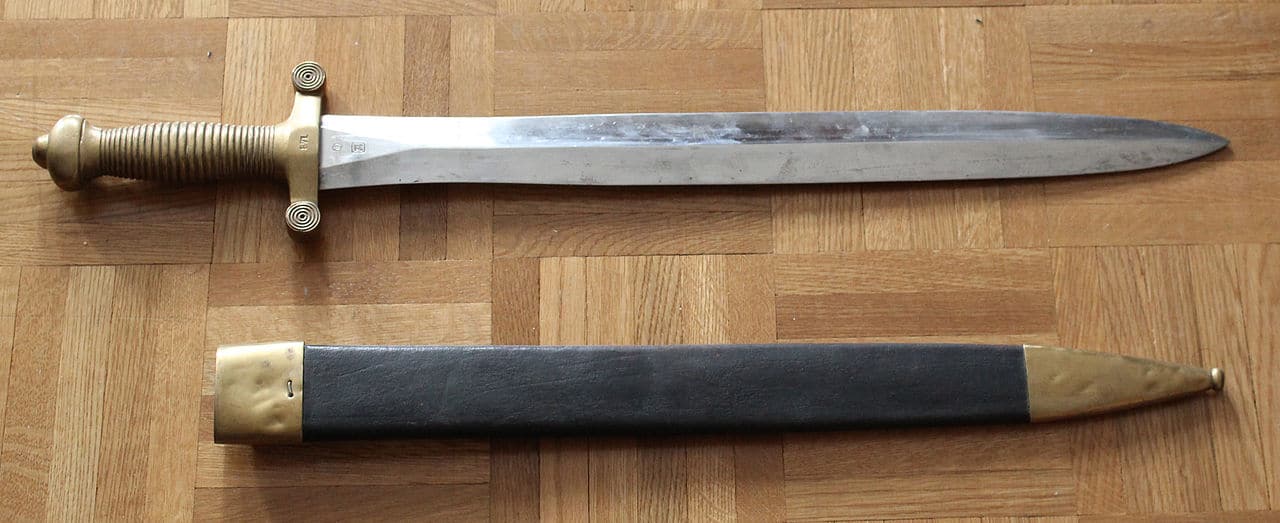
This type of sword is likely to be one that comes to mind first when we think of a sword. The short sword is the classic weapon of choice for the average medieval knight. Short swords measure at around 30 to 60 cm with a one-hand grip. Some famous examples of short swords are Northern England’s Seax, Ancient Rome’s Gladius, and Ancient Greece’s Xiphos. Historians also classify these three short swords as Iron Age Swords, which are swords forged from iron in the 12th century BC.
Long Sword
The long sword (or sometimes spelled as longsword) is a type of sword that is wielded with two hands. As was popular in the High Middle Ages, the long sword has a cruciform hilt with a long, straight double-edged blade. Contrary to popular belief, the long sword’s name comes from its longer grip. Not that the long sword’s blade isn’t characteristically long, of course, as it can measure up to 110 cm.
Claymore

The claymore is one of the most common types of swords that often appear in video games. Similar to the long sword, the claymore also requires a two-handed grip because of its enormous size. Some will interchangeably use the term claymore with greatsword.
From the 15th to the 17th century, the claymore was a popular choice for Scottish soldiers as it represented strength and skill. This type of sword’s most distinct characteristic is its crossguard, which sloped down toward the blade with ends shaped into quatrefoils
Two-Handed Sword
Used primarily in the 16th century, the Zweihänder or two-hander is the German version of the long sword. This two-handed sword was the trademark weapon of the German Army. The typical Zweihander measures 140 cm in length and weighs around 4 lbs. In its later development, forgers included Parierhaken or “parrying hooks” near the blade’s guard. The Zweihänder is one of the last recorded swords that followed the trend in crafting longer and bigger swords during this time.
Bastard Sword or Hand and a Half Sword
The bastard sword or the hand and a half sword is another type of sword that is characterized by its grip. Knights can use either one hand or two hands when wielding this sword, hence the name hand and a half. This sword gained popularity in the 19th century. It is a bit difficult to identify the bastard sword’s characteristics as it was very versatile and the blades varied. However, it closely resembles the long sword, albeit with a shorter blade and a more rounded tip.
Falchion Sword
This type of sword varies in shape. Some Falchion swords appear like a saber with a curved blade and a clip point. Other Falchion swords have straight blades that only curve at the edge’s tip. Historians often compare the falchion to the scimitar, a Persian sword, for its resemblance to an ax and sword. They also call this type of sword a “peasant sword” because of how it was often crafted using farming tools.
Rapier
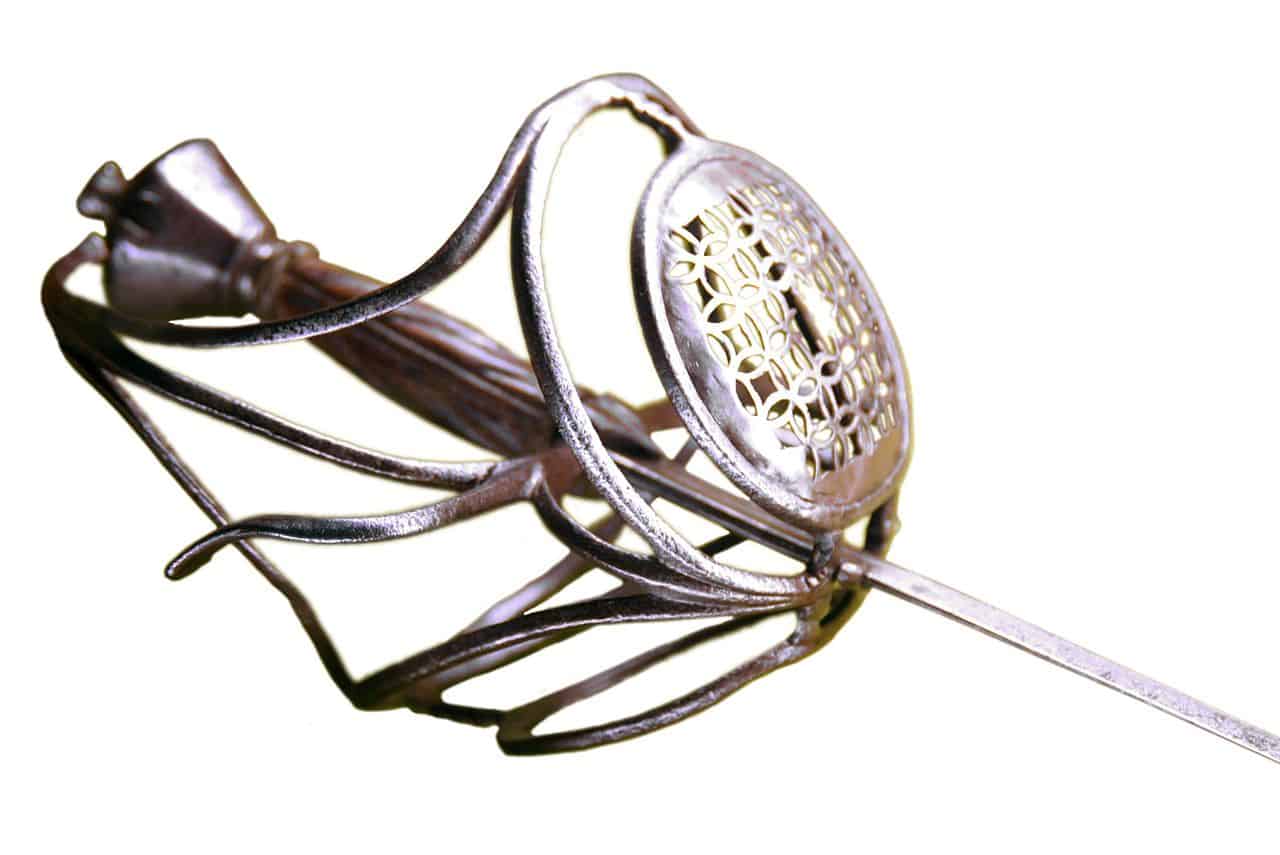
The rapier is a thrusting sword with a thin and pointy blade. In the 16th and 17th century, rapiers came in two forms: civilian rapiers and military rapiers. The former was lighter and shorter as wielders used it for self-defense. Military rapiers, on the other hand, were much heavier and later developed into small swords. The Met displays an intricately designed rapier owned by Prince-Elector Christian II of Saxony, along with other types of swords.
Crusader Sword
The Crusader sword is the crusading knight’s weapon of choice. This type of sword is highly symbolic as the shape boasts of perfection and harmony and its users were held in high regard as well. In the Middle Ages, Crusaders comprised the “soldiers of God,” who had the goal of finding the Holy Land in Jerusalem.
The Crusader sword measured around 80 cm with a wide hilt originally meant for a one-handed grip. What might be most distinct for this type of sword is its fuller, which is a shallow groove that runs down the center of the blade to make the sword lighter. Crusaders used this weapon to slash through enemies, but its lightweight also made it possible for fencing use during the middle ages.
Hanger
Like most types of swords, the hanger is another versatile sword that appears as a long knife or a short sword. People often used the hanger as a hunting tool and weapon, which is why they often called it a wood knife or hunting sword. Most hangers have a single-edged blade that is slightly curved and a shell guard on its hilt.
Cut and Thrust Sword
A cut and thrust sword is halfway between an arming sword and a rapier. Developed from the medieval knight’s short sword, the cut and thrust sword has a thick blade that tapers sharply at the end. This type of sword is easy to carry and wield for most Renaissance knights, making it ideal for quick thrusts in combat. Field swords and side swords also fall under this category.
Cutlass (Pirate Sword)
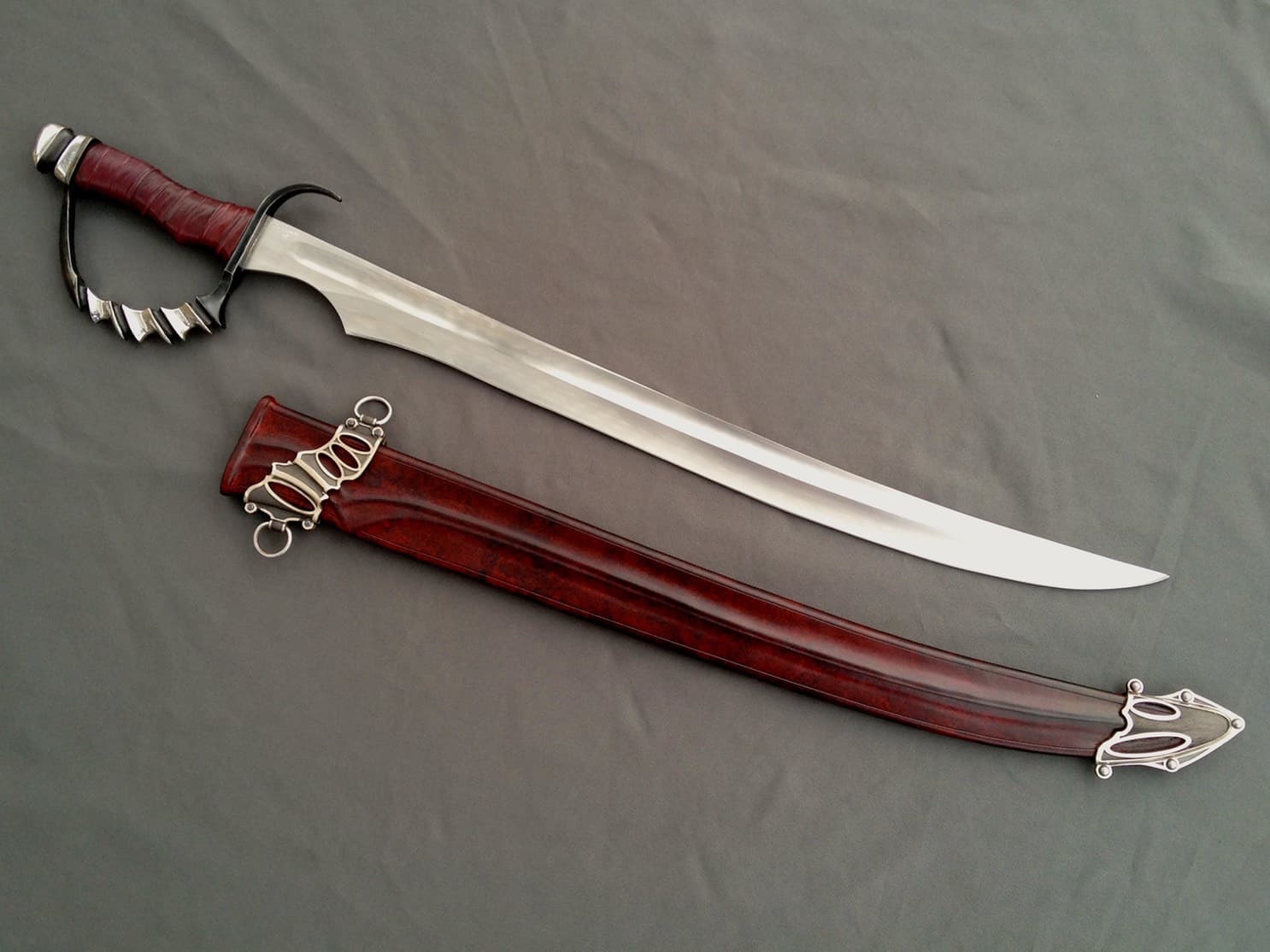
If you’ve ever wondered what type of sword pirates favored, then here’s the answer: a cutlass. The cutlass is the choice of naval sidearm. It has a slightly curved blade with a basket-shaped guard on its hilt. The cutlass was popular among sailors because of its versatility and easy use within a cramped ship. It is also much easier to master than the average rapier.
Harpe
The harpe is a Greek type of sword that is often mentioned in Greek mythology. The harpe’s blade protrudes at the tip into a sickle-shape. This scythe is particularly symbolic in the Greek myth that depicts the fall of Uranus. In this legend, Uranus cast Gaia and their children down into Tartarus. Enraged, Gaia ordered them to kill Uranus, and she gifted Cronus a harpe sword in order to do so. Because Cronus successfully killed Uranus using this weapon, the Greeks saw the harpe sword as a symbol of the god’s power.
Dao

The Dao (pronounced as dow) is a sword originating from China, dating as far back as the Bronze Age. The proper use of this sword includes a lot of chopping and slashing. This type of sword has a single-edged blade that is slightly wider than a Chinese sabre’s. The Dao is one of China’s four traditional weapons, alongside the gun, qiang, and the jian, which is a double-edged sword.
Falcata
Another type of sword is the falcata sword, used by the southern Iberian tribes before the Punic wars. The falcata has a single-edged blade with a distinct shape. From the hilt, the blade curves inward while the edge of the tip curves outwards. This peculiar design distributes the weight across the blade so that each wielder can execute both ax-like blows and sword-like thrusts. The falcata’s hilt is also eye-catching. It curves into a hook that Iberians would connect chains to.
Scimitar
When people use the term, “Scimitar,” they often refer to all kinds of curved swords from Asia or “Oriental blades.” This is because there are records of Turkic, Tungusic, Mongols, Rajputs, and Sikhs soldiers all using scimitars. From the 9th century, Asian soldiers used scimitars in battle. In particular, the Turkic nomads used scimitars while charging into battle on a horse. The scimitar’s curved blade makes it ideal for swinging and slashing. In Saudi Arabia, executioners also used the scimitar for beheading.
Katana

The katana might be one of the most famous swords, well, ever because of its appearance in plenty of Japanese and Hollywood films. The katana is a long sword with a curved, single-edged blade that is typically around 60 to 90 cm long. The katana’s hilt has a guard, and the grip is long enough for two hands. Katanas are most known for their sharp, cutting edge. While most katanas were long, samurais also employed short katanas, which they called wakizashi. In feudal Japan, a samurai would wear their katana in their sash with the blade facing upward.
However, the katana is only one of the many types of Japanese swords in existence.
Ninjato
If katanas are samurai swords, then the ninjatos are ninja swords. The shinobi, or ninja, in feudal Japan favored the ninjato or ninjaken as their bladed weapon of choice. Sword masters often describe this type of sword as a straight-bladed short sword. Like the katana, the hilt has a guard, but the ninjato is shorter, its total length measuring under 60 cm.
Many believe that the design we know of the ninjato today is only a depiction based on the designs of chokuto swords because there is no recorded evidence of the existence of this legendary sword. However, that does little to temper the sword’s popularity. Today, the ninjato is a popular choice because of its appearance in pop culture as well as in the art of modern ninjutsu, or the martial arts and covert technique employed by ninjas during feudal Japan.
Messer Sword
Another type of sword is the messer. This single-edged German weapon has two different sword types: the lange messer and the kriegsmesser. The lange messers or “long knives” are typically used for self-defense and held in a one-handed grip. Meanwhile, the kriegsmesser or “war knife” is a military weapon of the Landskencht, or mercenaries of the Holy Roman Empire’s Imperial Army from the 14th to 16th centuries. The hilt of this sword sets the messer apart from other swords: forgers attach the messer’s blade to the hilt using a slab tang, pressed between grip plates typically made of wood.
Bolo
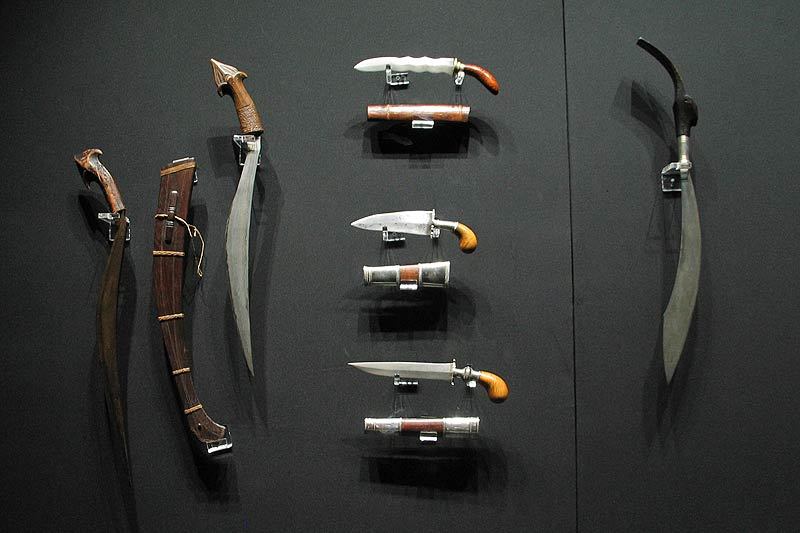
The bolo or itak is a common tool from the Philippines. It resembles the machete in shape, with a steel blade that widens and curves at the tip. The grip of a bolo is one-handed, and farmers usually construct the handle from hardwood or the horn of a carabao. This type of sword is more of a tool than a weapon, as farmers often use this for clearing vegetation, plowing the field, or harvesting crops. However, Filipino martial artists also incorporate the bolo in their techniques such as Arnis, a weapon-based fighting martial art. Other countries such as Indonesia, Malaysia, and Brunei also use the bolo.
Khanjar
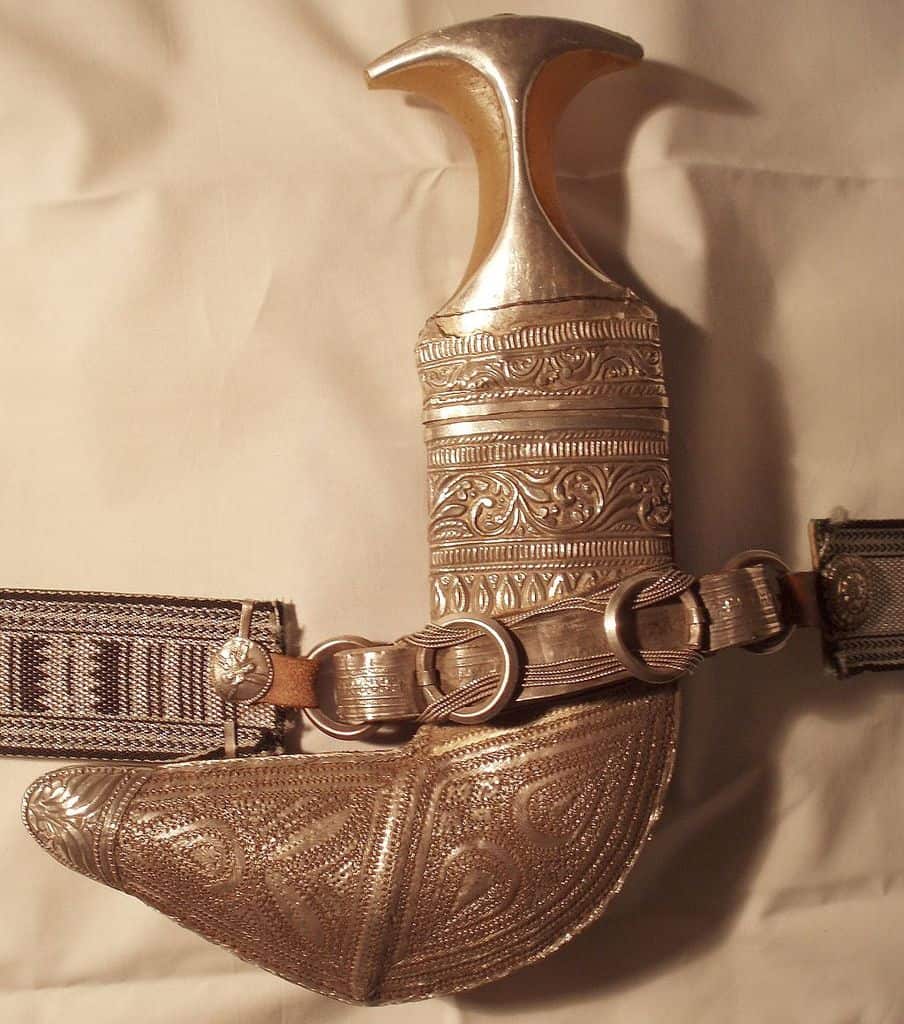
The khanjar is a type of sword originating from Oman. It is a traditional dagger that men wore for various ceremonies. This type of sword has a distinct shape: it is short with a blade that curves into the letter “J” like a hook. The khanjar is highly symbolic to Oman as it is the national symbol of the sultanate. Marketing-wise, plenty of commercials feature the khanjar, and tourists often buy replicas of this sword as a souvenir.
The Ottoman Empire also used the khanjar. Police officers in the Balkans armed themselves with the khanjar, and they continued to do so even after the Ottoman Empire’s rule ended.
Dha
The Dha or dah is another type of sword that comprises different types of blades from Southeast Asia. Many people liken and often interchangeably use Dha to refer to the Thai daab or Laos daab. The Burmese Dha, however, is a single-edged sword with a straight blade. Practitioners of Banshay, a Myanmar weapon-based martial art, often use a pair of Dha in a sword dance.
Hwandudaedo
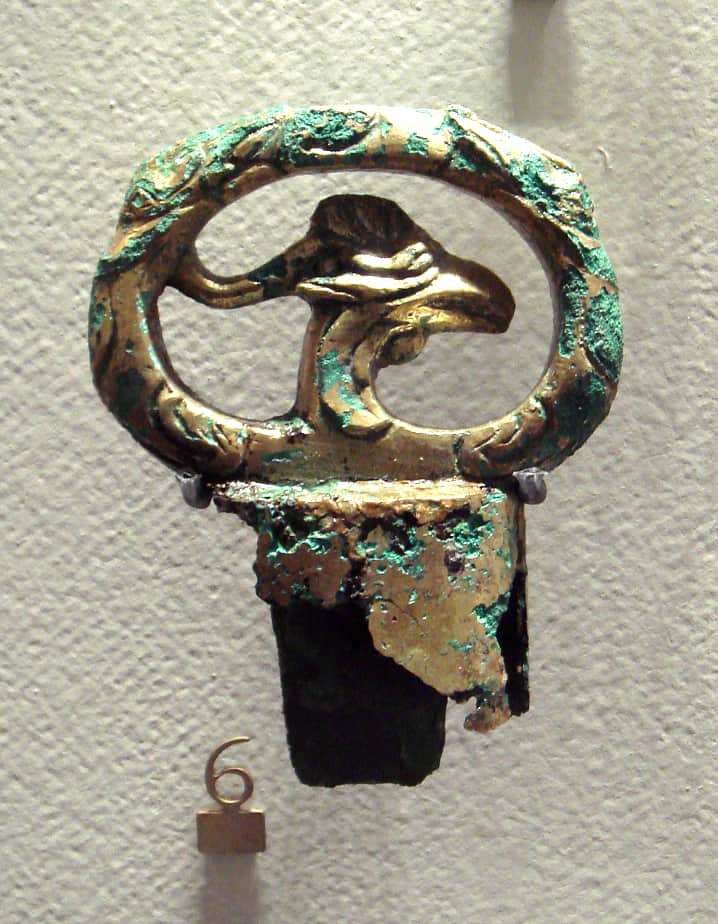
Korea’s earliest type of sword is the Hwandudaedo or the ring-pommeled sword. As the name suggests, the sword’s pommel is circular and often showcases an intricate design. Crafters of the Hwandudaedo took great care to make the Hwandudaedo’s pommel as visually pleasing as possible. This is because these swords were often gifts meant for the royal family.
In fact, the Hwandudaedo had different types according to its pommel. The Sohwandudaedo refers to one with a plain pommel ring. A Samyeophwandudaedo refers to one with a pommel ring engraved with three leaves. Other designs, each with their own respective names, include a dragon, phoenix, and a peacock‘s feather pattern. While the Hwandudaedo’s pommel varied, its blade was consistently straight and double-edged.
Shamshir
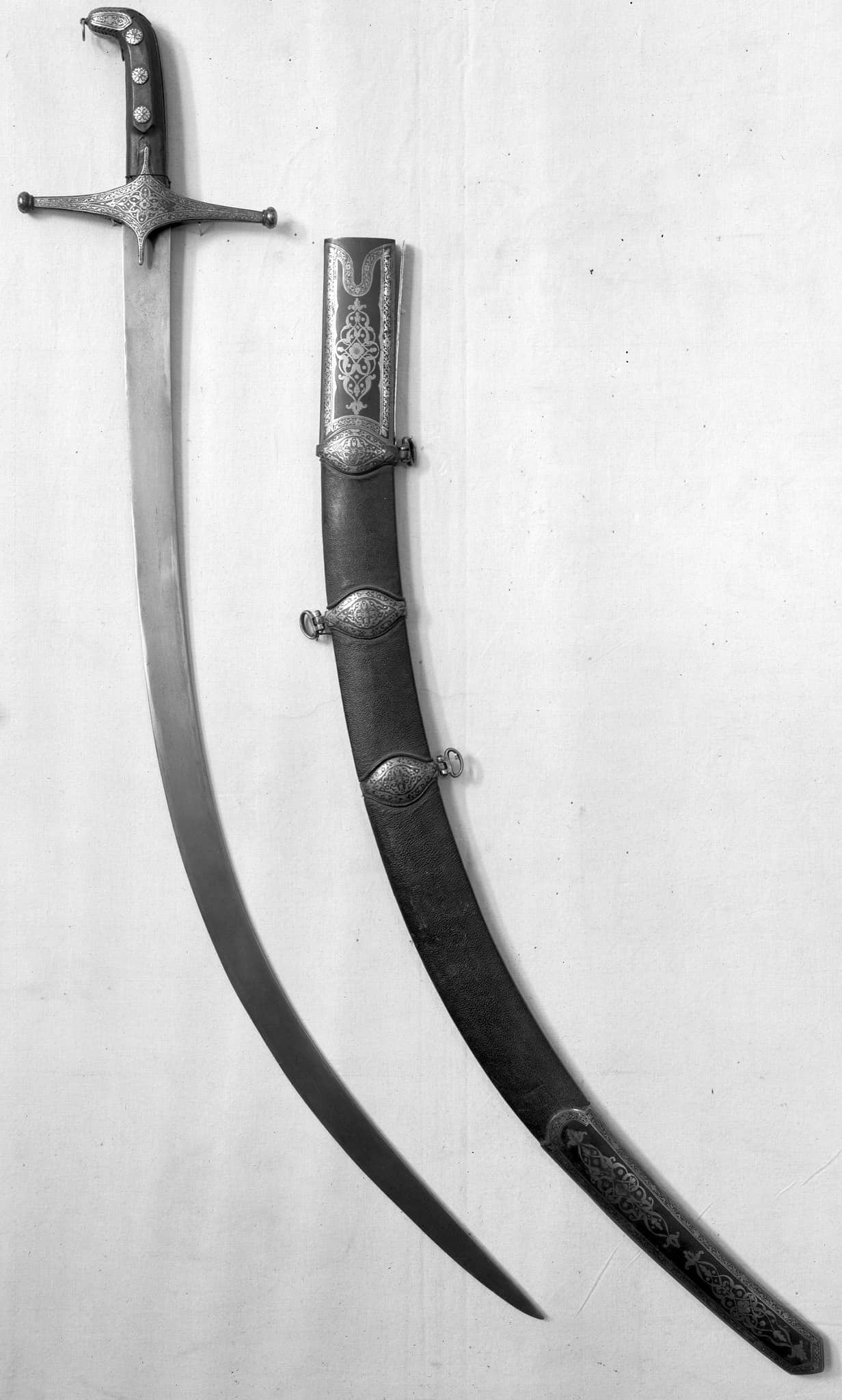
Another type of sword is the shamshir, a Persian curved sword. This sword is classified under the scimitar but is distinctly native to Persia. This Persian sword has a slim blade that curves at the tip. People rarely trust in the accuracy of shamshir wielders, for the blade’s shape is best for thrusting rather than slashing. Unlike most swords, the shamshir is worn horizontally.
Kastane
Originating from South Asia, the kastane is a single-edged Sri Lankan sword. Much like the Hwandudaedo, the kastane’s hilt holds the attention of its wielders. Blacksmiths craft and design the hilts of kastane swords with stories in mind, particularly myths from Buddhism. These designs feature mythical creatures such as Kirtimukha Serapendiya, Nagas, and other symbolic animals such as lions, dragons, and crocodiles. Aside from the hilt, blacksmiths will occasionally decorate the kastane’s scabbard or sheath as well.
Fantasy Swords
Of course, no list of the different types of swords would be complete without fantasy swords. While they don’t carry historical significance like the others in this list, fantasy swords are just as coveted—if not more. Sword collectors from all over the world understand the cultural importance of fantasy swords.
The shape, blade, and purpose of fantasy swords vary, and this is because plenty can fall under this category. There is no limit or restriction to what a fantasy sword can be, whether it’s an elven dagger, a witch hunter’s sword, or a dragon sword. This makes each fantasy sword unique.
Was this page helpful?
Our commitment to delivering trustworthy and engaging content is at the heart of what we do. Each fact on our site is contributed by real users like you, bringing a wealth of diverse insights and information. To ensure the highest standards of accuracy and reliability, our dedicated editors meticulously review each submission. This process guarantees that the facts we share are not only fascinating but also credible. Trust in our commitment to quality and authenticity as you explore and learn with us.
